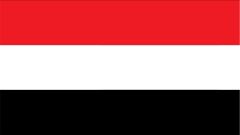Yemen For Kids
-
Geographical Location: Yemen is located in the southwestern part of the Arabian Peninsula in the Middle East. It shares borders with Saudi Arabia to the north and Oman to the northeast. Yemen has a coastline along the Red Sea and the Arabian Sea.
-
Capital and Largest City: The capital city of Yemen is Sana’a. However, due to the ongoing conflict, Aden is currently serving as the temporary capital and the main seat of the internationally recognized government.
-
Historical Significance: Yemen has a rich historical and cultural heritage. It was home to ancient civilizations, including the Kingdom of Saba (Sheba), which thrived in the southwestern part of the country. Yemen was a major center of trade and Islamic scholarship in the medieval period.
-
Ethnicity and Language: The majority of the population in Yemen is ethnically Arab, with Arabic being the official language. Yemeni Arabic, with its various regional dialects, is widely spoken across the country.
-
Religion: Islam is the predominant religion in Yemen, and the majority of Yemenis are Muslims. The country has a significant Sunni Muslim majority, with a notable Zaydi Shia Muslim population in the north.
-
Architecture and UNESCO World Heritage Sites: Yemen is known for its unique architectural heritage. The historic city of Sana’a features traditional multi-story mud-brick buildings with intricate designs. Several sites in Yemen have been recognized as UNESCO World Heritage Sites, including the Old City of Sana’a, the Old Walled City of Shibam, and the Historic Town of Zabid.
-
Challenges and Conflict: Yemen has faced significant challenges, including political instability, poverty, food insecurity, and the ongoing civil war. The conflict, which began in 2014, has resulted in a humanitarian crisis, with millions of people in need of assistance.
-
Socioeconomic Factors: Yemen is one of the least developed countries in the region, with high levels of poverty and unemployment. Agriculture, fishing, and oil production are key sectors of the economy, although the ongoing conflict has severely impacted economic activities.
-
Bab-el-Mandeb Strait: Yemen is located at the southern entrance of the Red Sea, near the Bab-el-Mandeb Strait. This strategic waterway connects the Red Sea to the Gulf of Aden and is a critical maritime route for international trade, including the passage of oil shipments.
-
Qat Cultivation: Qat, a stimulant plant with mild narcotic effects when chewed, is widely grown and consumed in Yemen. It is an integral part of the social and cultural fabric, but its cultivation has had negative effects on agricultural productivity and water resources.
-
Yemeni Cuisine: Yemeni cuisine is known for its rich flavors and diverse dishes. Traditional Yemeni dishes include mandi (a spiced rice and meat dish), saltah (a meat and vegetable stew), and kabsa (a rice dish with meat and spices).

